Weather Extremes
IPCC 6th Assessment
For the first time IPCC has acknowledged that all extreme weather events are increasing, due to human activities and they will continue to increase, including compound and unprecedented extremes, all of which has happened. Extreme events have been severe and unprecedented in developed and well as developing countries.
Extreme events are economically very costly. Extreme events are the most damaging global warming impact to populations and crops. This is already impacting food security regionally and reducing the rate of increase in global food productivity. Extremes can ruin harvests and damage agricultural land.
This will make life hard to live and unliveable in many regions as temperatures are made to keep rising.
Extremes can collapse societies and economies and if agriculture fails, with severe degradation of lands, could collapse the global civilization
"Projected changes in extremes are larger in frequency and intensity with every additional increment of global warming' (WG1 SPM 6 Chart of projections)
Extreme events have become more probable and more intense, and this will continue to increase with warming
For the first time IPCC has acknowledged that all extreme weather events are increasing, due to human activities and they will continue to increase, including compound and unprecedented extremes, all of which has happened. Extreme events have been severe and unprecedented in developed and well as developing countries.
Extreme events are economically very costly. Extreme events are the most damaging global warming impact to populations and crops. This is already impacting food security regionally and reducing the rate of increase in global food productivity. Extremes can ruin harvests and damage agricultural land.
This will make life hard to live and unliveable in many regions as temperatures are made to keep rising.
Extremes can collapse societies and economies and if agriculture fails, with severe degradation of lands, could collapse the global civilization
"Projected changes in extremes are larger in frequency and intensity with every additional increment of global warming' (WG1 SPM 6 Chart of projections)
Extreme events have become more probable and more intense, and this will continue to increase with warming
Some are increasing globally, some like wild fires and drought are increasing regionally.
COMPOUND EXTREMES Human influence has increased the chance of compound extreme events since the 1950s. This includes increases in
the frequency of concurrent heatwaves and droughts on the global scale, fire weather in some regions of all inhabited continents, and compound flooding in some locations. This will increase of compound events will continue.
Unprecedented extremes – that is, events not experienced in the past–
will occur in the future.
Unprecedented extremes – that is, events not experienced in the past–
will occur in the future.
IPCC AR6 WG1(science) SPM
WG1 Chapter 11 Extreme weather
IPCC graphics below this text- show the intensity of extreme weather events increasing at an accelerating rate
'Human-induced climate change is already affecting many weather and climate extremes in every region across the globe. Evidence of observed changes in extremes such as heatwaves, heavy precipitation, droughts, and tropical cyclones, and, in particular, their attribution to human influence, has strengthened since AR5
It is certain that hot extremes (including heatwaves) have become more frequent and more intense across most land regions since the 1950s
Marine heatwaves have approximately doubled in frequency since the 1980s and human influence has contributed to most of them since at least 2006.
The frequency and intensity of heavy precipitation events have increased since the 1950s over most land area and human-induced climate change is likely the main driver.
Human-induced climate change has contributed to increases in agricultural and ecological drought
It is likely that the global proportion of major (Category 3–5) tropical cyclone occurrence has increased over the last four
decades, and it is very likely that the latitude where tropical cyclones in the western North Pacific reach their peak intensity has shifted northward.
decades, and it is very likely that the latitude where tropical cyclones in the western North Pacific reach their peak intensity has shifted northward.
Human influence has increased the chance of compound extreme events since the 1950s. This includes increases in the frequency of concurrent heatwaves and droughts on the global scale, fire weather in some regions of all inhabited continents, and compound flooding in some locations
State of Our Climate
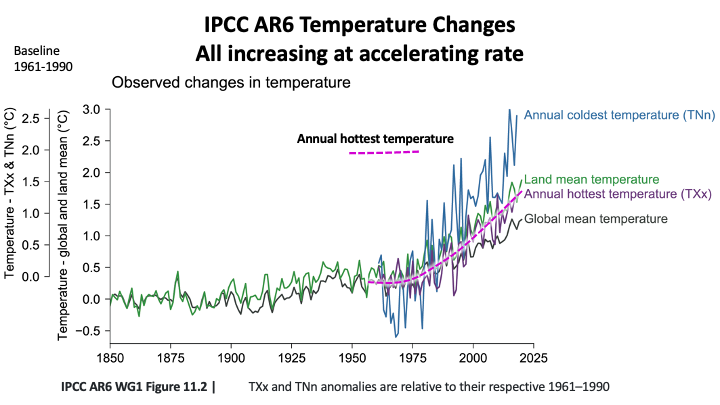
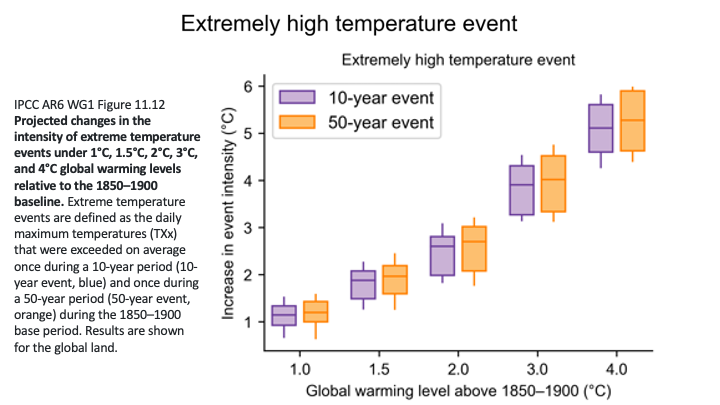
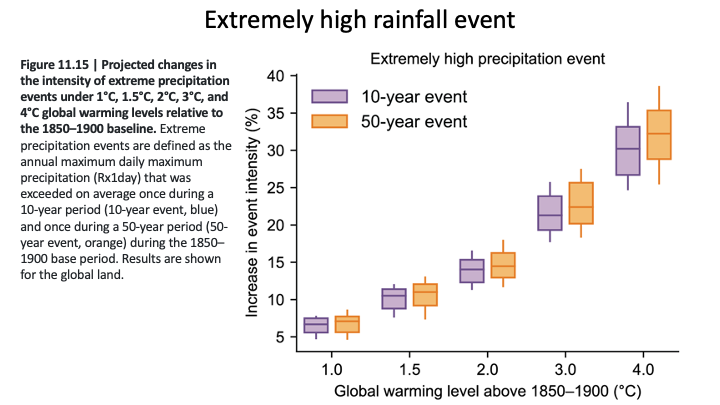
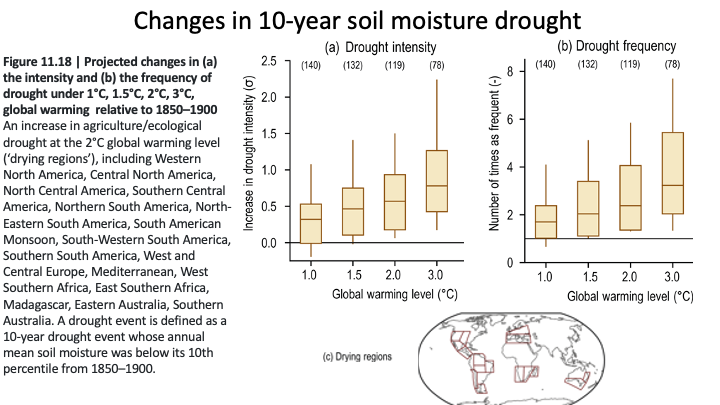
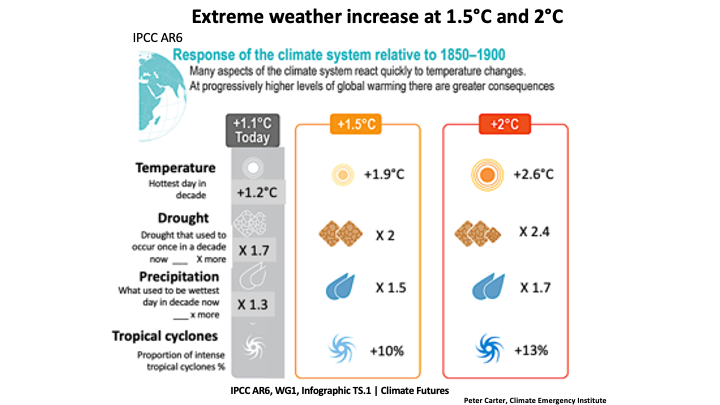

2021, WMO Atlas of Mortality and Economic Losses from Weather, Climate and Water Extremes (1970–2019)
IPCC AR6 Extreme Weather images
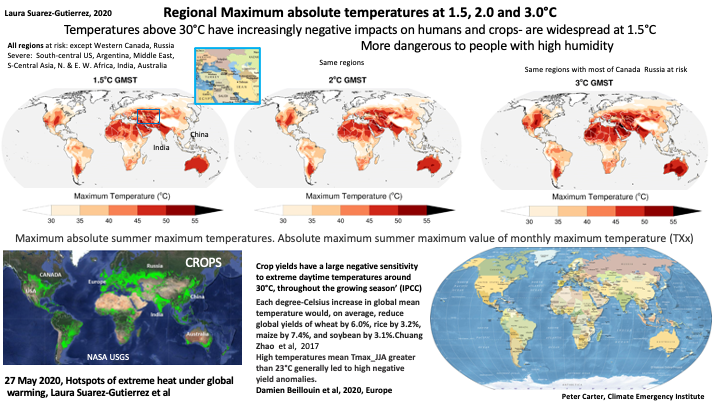
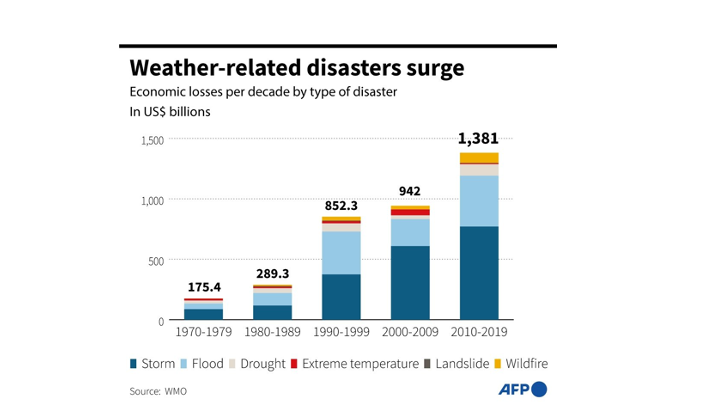
Extreme weather is increasing and is most damaging to human populations and crops
6 March 2023, Increased probability of hot and dry weather extremes during the growing season threatens global crop yields
EM-DAT International Disaster Database
THE Site
The Watchers Severe Weather
The Watchers Severe Weather
Observed
Projected increases under global warming
IPCC AR6, confirms that 1.5°C is globally disastrous and 2°C globally catastrophic
Increases at 3 and 4°C are moot in terms of climate change science because of multiple catastrophic global planet impacts at 2°C
Increases at 3 and 4°C are moot in terms of climate change science because of multiple catastrophic global planet impacts at 2°C
Extreme Weather Report
Yellow Dot Studios
Yellow Dot Studios